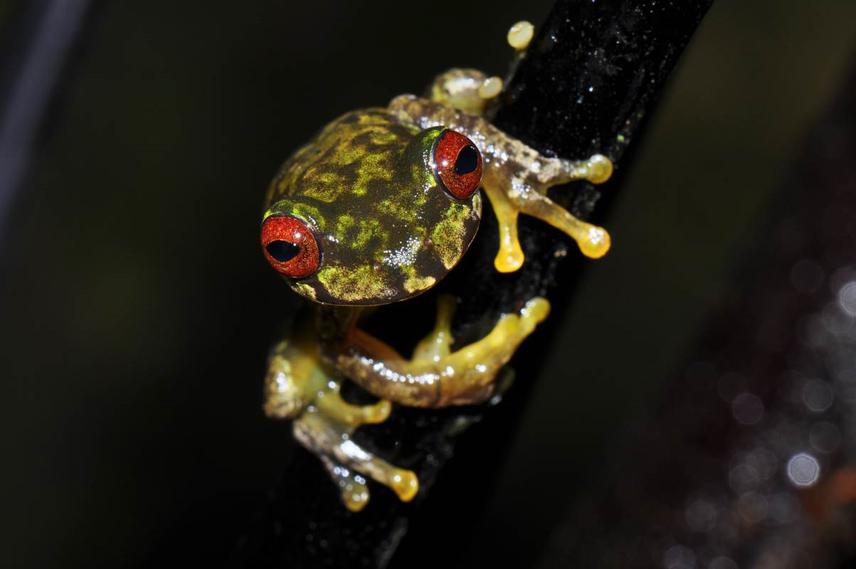Jonathan Kolby
Other projects
29 Sep 2008
Investigation of Forest Canopies as Possible Safe Havens from Amphibian Chytrid Fungus (Batrachochytrium dendrobatidis): Hope in the Midst of a Global Amphibian Extinction Crisis
This project strives to elucidate the environmental distribution of amphibian chytrid fungus (Batrachochytrium dendrobatidis) throughout Cusuco National Park, Honduras while also assessing the relative significance of four possible dispersal pathways including: amphibians, arthropods, wind/rain, and human locomotion. The resulting information will allow us to evaluate the risk of chytrid exposure faced by each of the park’s 16 endangered amphibian species based on amphibian behaviour, distribution, and life history and evaluate various modes of pathogen dispersal which occur within the natural environment.

Adult mossy red-eye tree frog (Duellmanohyla soralia). © Jonathan E. Kolby
Amphibian chytrid fungus (Batrachochytrium dendrobatidis, “Bd”) is an emerging infectious disease agent which is contributing towards a global amphibian extinction crisis. Mounting evidence suggests that the enigmatic dispersal pathways of this pathogen are highly complex and present a significant roadblock towards in situ conservation efforts.
In 2009, we conducted an investigation to determine whether arboreal bromeliads may possess chemical (i.e. high acidity) and physical attributes (i.e. distance away from terrestrial water sources & height above ground) able to prevent the onset of virulent Bd epidemics within amphibian species inhabiting rainforest canopies. During this study, we positively identified Bd-infected amphibians within arboreal bromeliads, some of which were quite a distance away from terrestrial water sources.
In order to develop a better understanding of the threats posed by this pathogen, our current project will investigate four different dispersal pathways which may be employed by Bd within Cusuco National Park, Honduras in an effort to explain how this waterborne pathogen is able to traverse terrestrial regions and disperse vertically into arboreal bromeliads. Mechanisms of dispersal to be considered include amphibians, arthropods, wind/rain, and human locomotion. We will employ a variety of techniques to detect the presence of Bd ranging from tree climbing and bromeliad water filtering to amphibian radiotracking and Bd swabbing. The arboreal presence of Bd likely exposes many more amphibian species to this pathogen than currently believed and also raises important questions as to the mechanisms of Bd dispersal on both local and global scales.
Our results will provide significant benefits for both national and international amphibian conservation efforts. Nationally, this work will help protect the survival of 16+ endangered amphibian species by enhancing our understanding of the distribution and dispersal of Bd in Cusuco National Park and the risks it poses to each of these vulnerable species. To protect some of the most threatened species, we are also working to apply our results to develop the first amphibian ex situ management program in Honduras. In addition to the benefits for Honduras, this project will also produce data to help address the international scope of the amphibian extinction crisis.
The global dispersal of Bd appears to continue primarily unabated, despite our growing knowledge of the association between Bd presence and global amphibian declines. Unless a concerted international effort is adopted to control the global spread of this emerging pathogen, hundreds of amphibian species will continue to be pushed towards extinction. A major stumbling block to this effort is the severe paucity of empirical data regarding the various routes of global and regional dispersal which Bd may follow and the relative exposure threat posed by each of these different pathways. Using this proposed project in Cusuco National Park as a model, we hope to elucidate several enigmatic pathways of Bd dispersal and produce data which can later be applied within a global context and to help develop effective international pathogen dispersal control mechanisms.